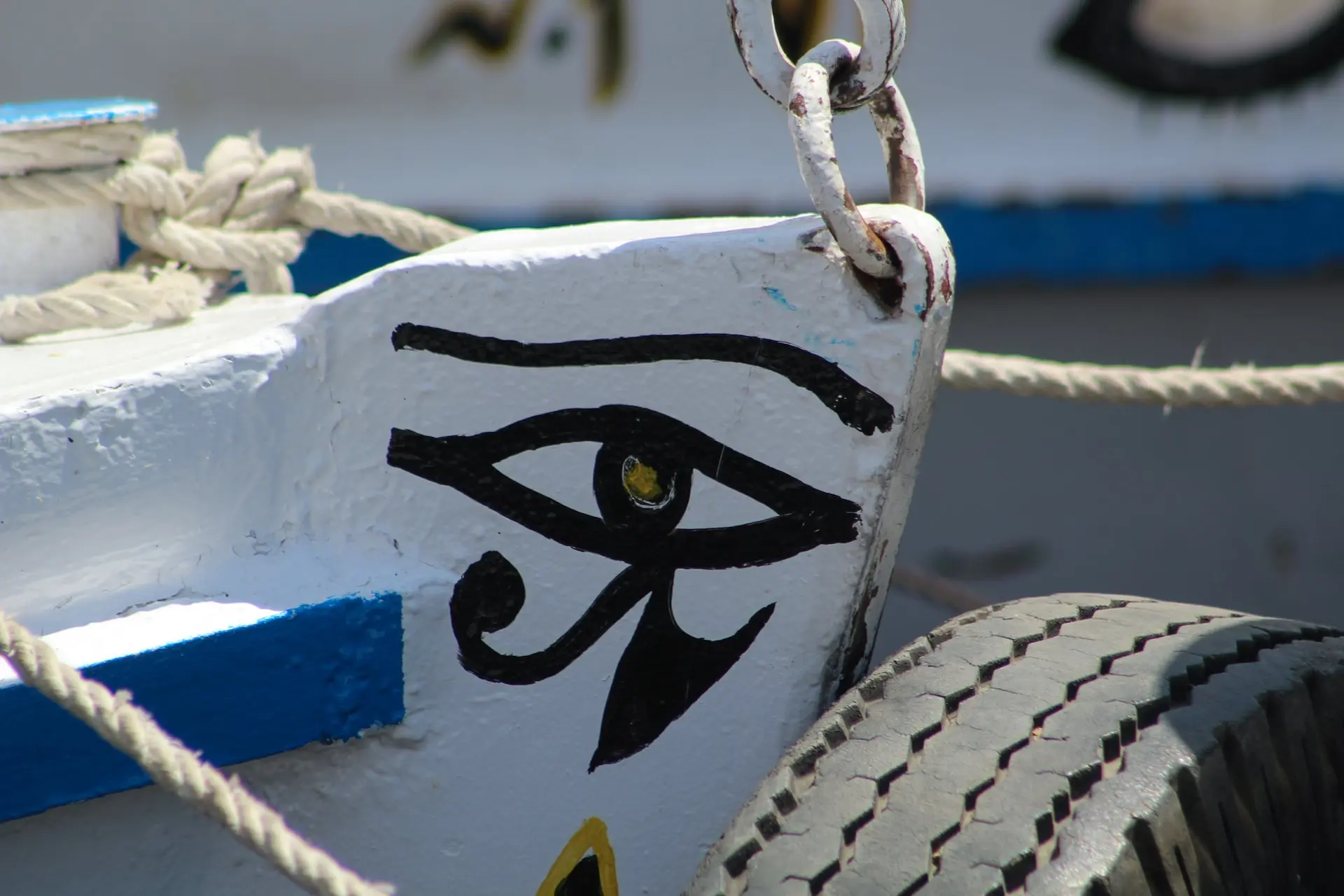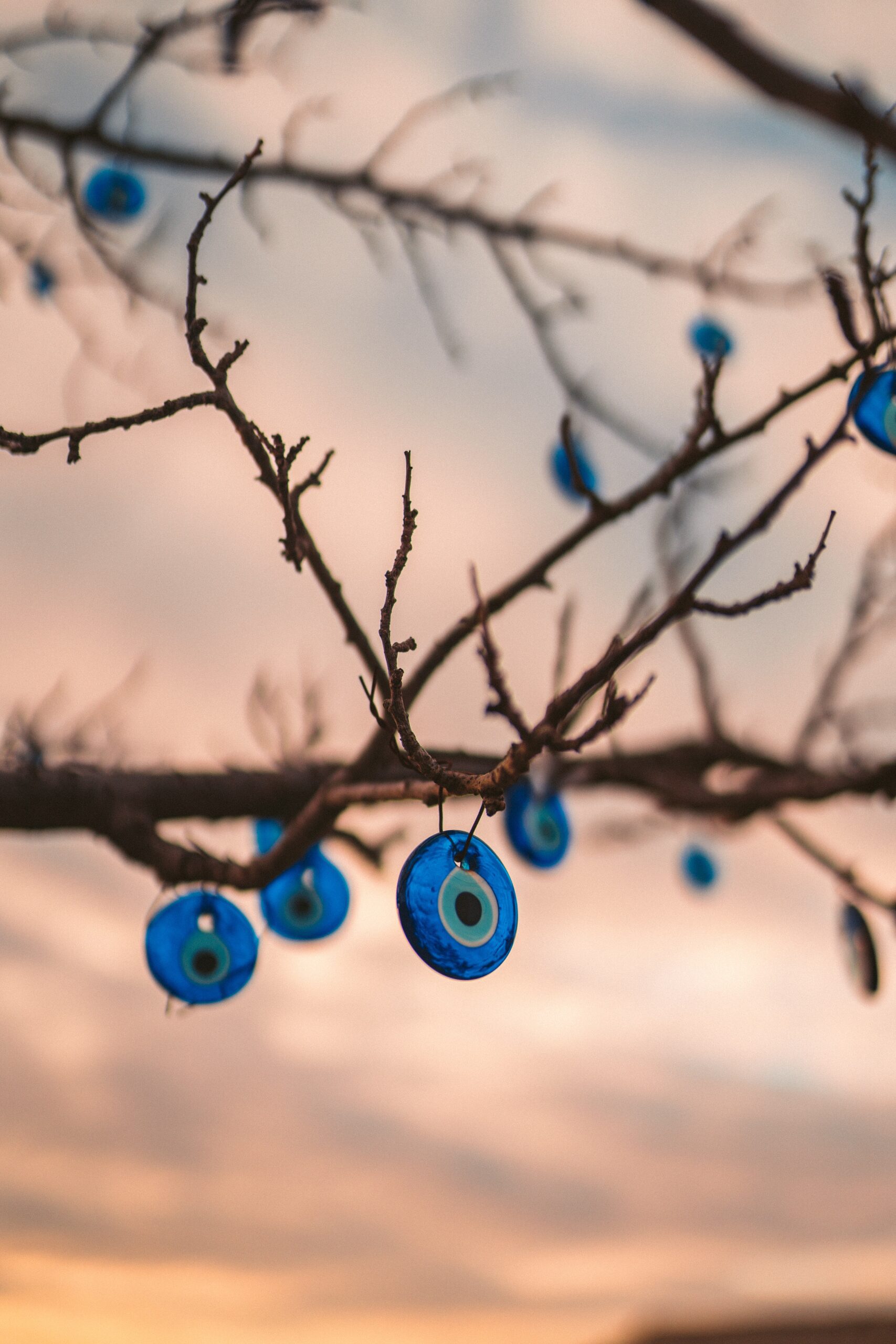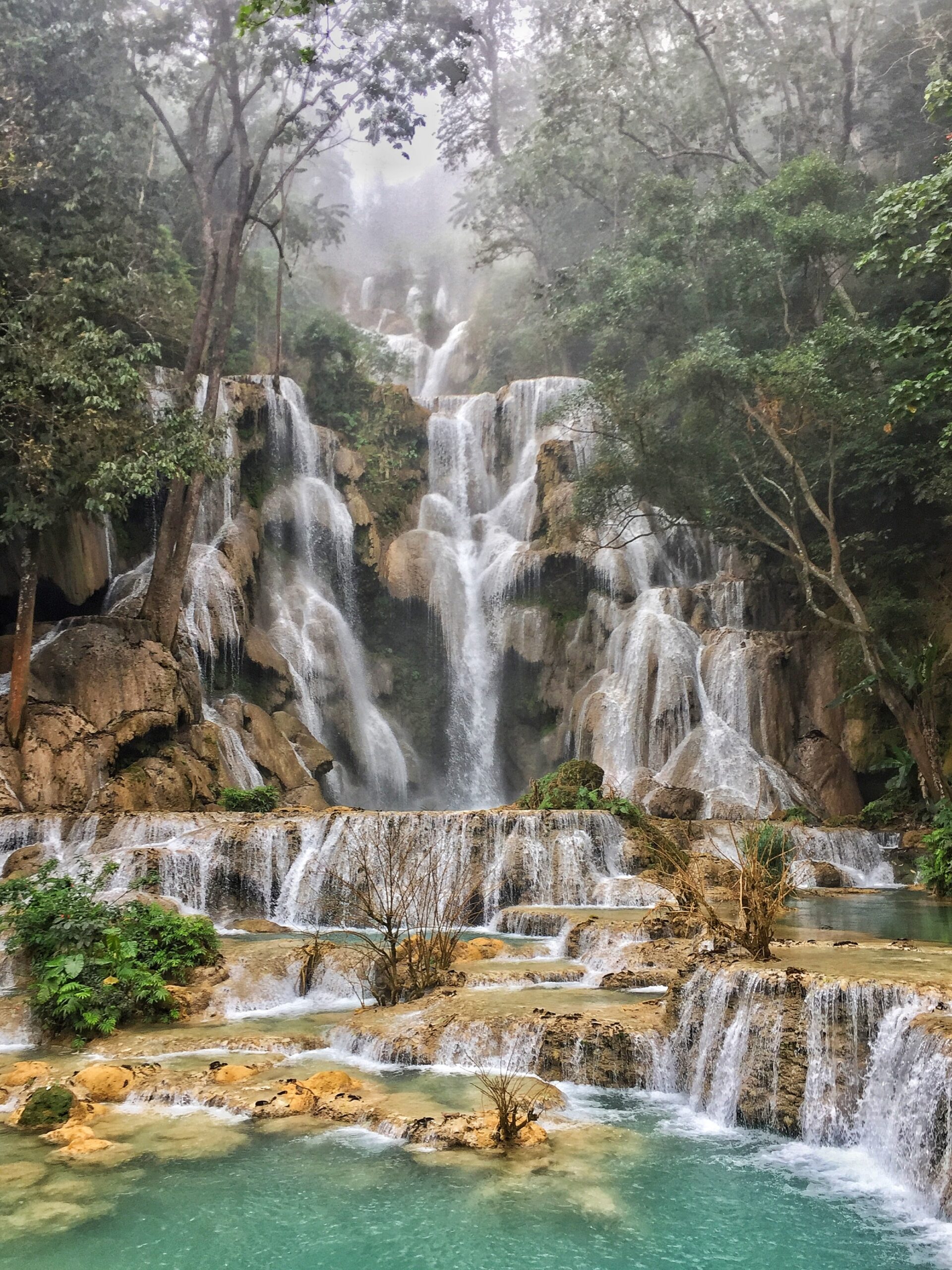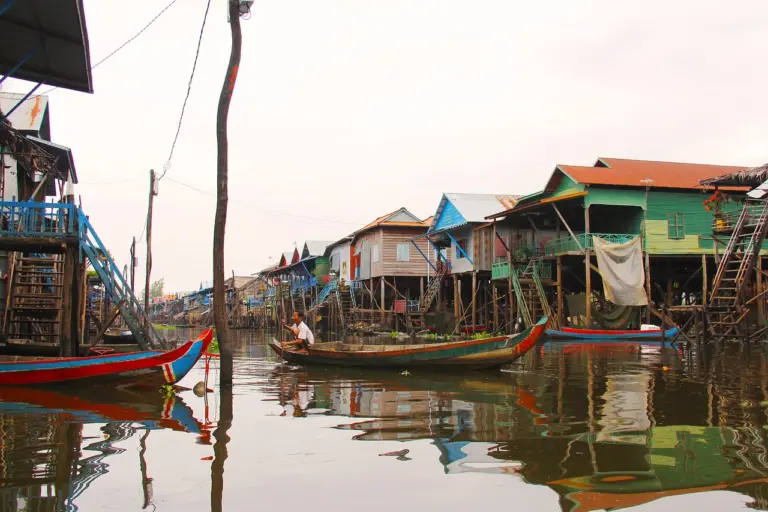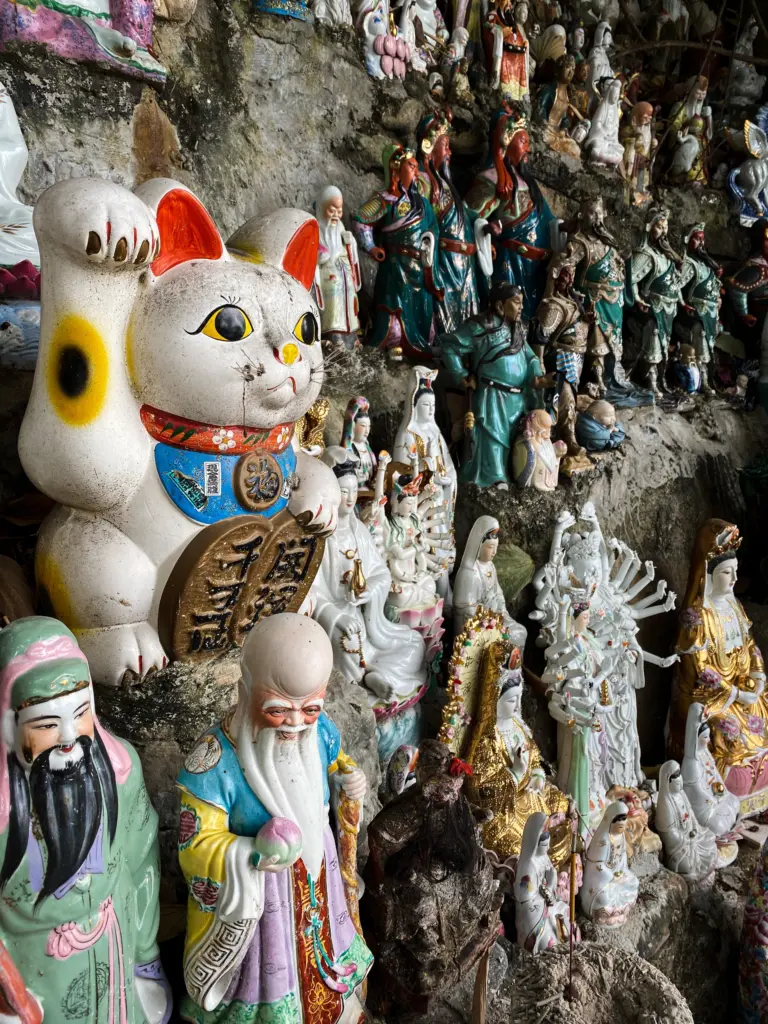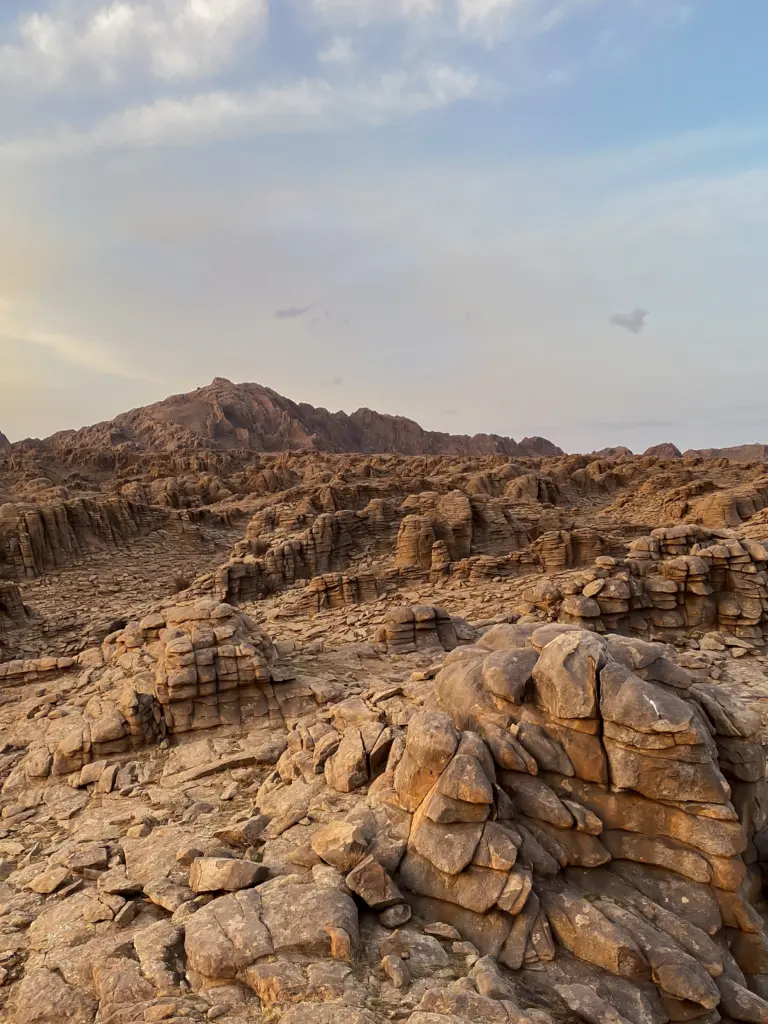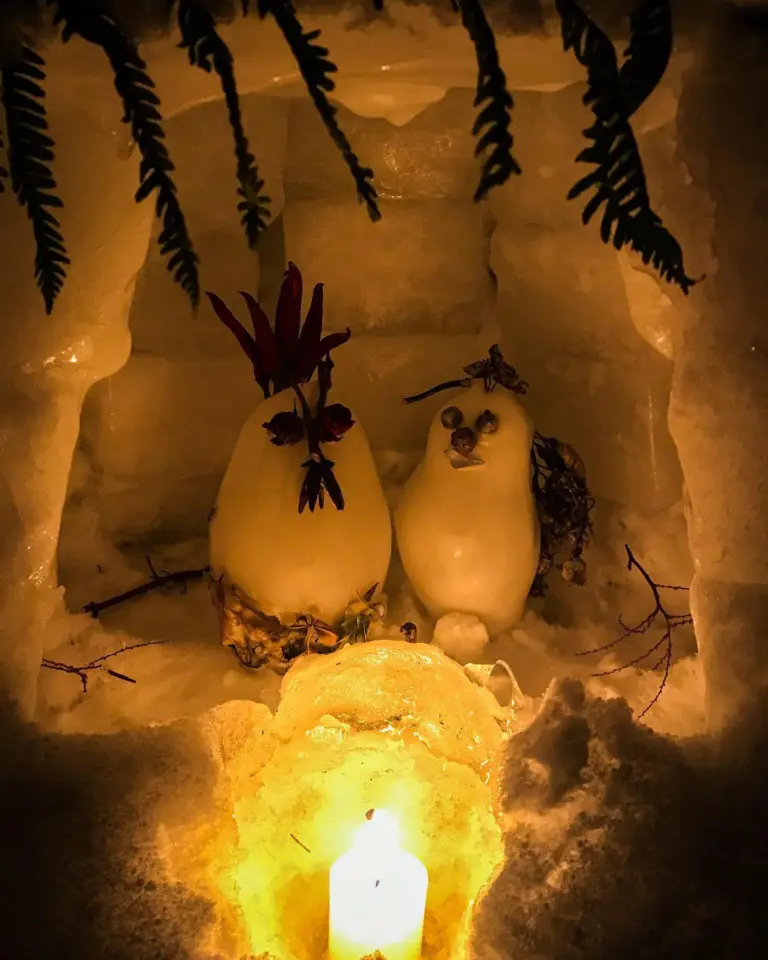Say hello to Sapporo, the capital city of Hokkaido, where the snowflakes dance in the winter air and the summer sun breathes life into the lavender fields.
Far removed from the well-trodden tourist paths of Kyoto and Osaka, Sapporo offers a refreshing taste of a Japan less explored.
Being one of the few cities in the world with a rectangular street system, it’s also home to the famous Sapporo Snow Festival, one of the largest winter events in the world!!
And here’s a fun fact for the foodies: Sapporo is also the birthplace of miso ramen!
Intrigued? Well, this is just the tip of the iceberg!
Dive into this article and discover the best places to visit, the most delicious foods to try, and the essential tips to make your trip to Sapporo unforgettable.
Table of Contents
ToggleHistory of Sapporo
Sapporo was developed in the mid-19th century, following the Meiji Restoration.
Before its development, the area was inhabited by the Ainu people, an indigenous group in Japan. The Meiji government aimed to develop Hokkaido to protect against potential foreign invasion (specifically Russia).
In 1972, Sapporo hosted the Winter Olympics, becoming the first Asian city to do so, which helped establish it as a major international destination.
And today, Sapporo is the fifth largest city in Japan, with a population of over 1.9 million. It has been recognized for its efforts to promote environmental sustainability and was even awarded the title of “Ecopolis” in 2022.
What to Know Before Going to Sapporo
In winter, temperatures can drop as low as -7°C (19°F). In summer, temperatures can rise up to 26°C (79°F) and there is a higher chance of rain.
Be sure to try the local delicacies like butter-corn ramen, Genghis Khan (grilled mutton), and Sapporo beer.
Tipping is not customary in Japan and can even be considered rude.
Sapporo is one of the snowiest cities in the world, receiving an average of 6 m (20 ft) of snow each year!
Sapporo is also famous for its fresh and delicious seafood. Don’t miss the opportunity to try local specialties like king crab, sea urchin, and scallops. The Nijo Market and the Curb Market are great places to enjoy fresh seafood.
You can join a local food tour to explore more of Sapporo’s delicious food scene. There are also customized guided tours available that cover plenty of Sapporo’s sights.
Best Places to Visit in Sapporo

1. Hokkaido Shrine
The Hokkaido Shrine, located in Maruyama Park, is a prominent Shinto shrine in Sapporo. It was founded in 1869 following an order from Emperor Meiji to enshrine three Shinto deities; Okunitama, Okuninushi, and Sukunahikona.
These deities, known as the Kaitaku Sanjin, or three deities of the Hokkaido reclamation, were initially enshrined in Tokyo before being moved to Sapporo by officers of the Kaitakushi, the former government of Hokkaido prefecture.
Although an interim building was constructed in 1870, the shrine was officially erected at its current location in 1871 and initially named “Sapporo Shrine”. It was later renamed “Hokkaido Shrine” in 1964.
The shrine is a popular spot for hanami (cherry blossom viewing) in the spring and offers a picturesque snow-covered landscape in the winter. Make sure to grab an omamori if you’re visiting!
Cost: Free
2. Historical Village of Hokkaido
The Historical Village of Hokkaido is a fascinating open-air museum located in the suburbs of Sapporo. It offers a glimpse into the past by showcasing the architecture and lifestyle of the region from the Meiji and Taisho periods (late 19th to early 20th century).
The village is divided into four distinct areas: a town, a fishing village, a farming village, and a mountain village.
Each area features carefully reconstructed buildings from that time, filled with period-appropriate furnishings and artifacts. You’ll might also encounter staff dressed in period costumes, going about their daily tasks as they would have done over a century ago.
It’s quite an immersive experience, similar to Edo Wonderland in Nikko!
In the town area, you can explore various buildings such as a newspaper office, a barbershop, and a post office.
The fishing village showcases the lifestyle of the coastal inhabitants, with a lighthouse and fishermen’s houses.
The farming village features traditional thatched-roof houses, a school, and a blacksmith’s workshop.
Finally, the mountain village offers a glimpse of log houses and a forestry railway.
Cost: 800 JPY

3. Sapporo Beer Museum
The Sapporo Beer Museum is set in a historic red-brick building from 1890, this museum is dedicated to the legacy of the Sapporo Breweries, one of the oldest and most iconic beer producers in Japan.
When you step inside, you’re not just entering a museum, but stepping back in time. You’ll learn about the origins of beer in Japan, the meticulous brewing process, and how Sapporo Breweries has evolved over the years.
And then, of course, there’s the beer. In the tasting room, you can try a selection of Sapporo beers, including some special brews that are only available here. If you’re hungry, there’s also a restaurant that serves a local dish, Genghis Khan, made with lamb and perfectly matched with the beer!
Cost: Free
4. Sapporo Science Center
The Sapporo Science Center is a comprehensive science museum designed to make learning about science and technology an engaging and interactive experience for visitors of all ages.
One of the major attractions of the center is the planetarium, which boasts one of the largest dome screens in Japan. With state-of-the-art technology, it offers an immersive experience that takes you on a journey through the cosmos, exploring stars, planets, and galaxies!
The center has several exhibition halls that cover a wide range of scientific topics, from physics and chemistry to biology and earth science. The exhibits are designed to be interactive and hands-on, for example, there are exhibits where you can even create your own tornado!
Cost: 1,000 JPY

5. Odori Park
Odori Park is the green heart of Sapporo and a symbol of the city. Stretching 1.5 km (1 mi) across the city center, this beautifully landscaped park serves as a dividing line between the north and south parts of Sapporo.
Originally designed in 1871 as a firebreak, it has evolved into a beloved recreational area and the site of some of the city’s most popular events.
Each of the 12 blocks of the park has its own unique features and attractions. For example, the Nishi 11-chome block houses the Sapporo TV Tower. Another block features the Black Slide Mantra, a famous sculpture by the artist Isamu Noguchi.
Throughout the year, Odori Park hosts various festivals. The most famous of these is the Sapporo Snow Festival and in summer, the park comes alive with events like the classic Bon Odori festival are available for everyone to join in!
Cost: Free
6. Moerenuma Park
Moerenuma Park was designed by the famous Japanese-American artist Isamu Noguchi. What used to be a waste treatment plant has been transformed into a breathtaking blend of nature and art.
The park features large open spaces, play areas for children, and several large scale art installations by Noguchi himself. One of the most iconic structures in the park is the Glass Pyramid, “Hidamari”, which houses a museum, gallery, and a café.
You can also climb the “Mount Moere,” a man-made mountain offering panoramic views of the park and the city.
Cost: Free

7. Sapporo TV Tower
Speaking of the Sapporo TV Tower, this iconic structure, completed in 1957, stands at a height of 147.2 m (482 ft) and is an instantly recognizable part of the Sapporo skyline.
Inspired by the Eiffel Tower in Paris, its design is both functional as a television and radio broadcast tower, yet aesthetically pleasing.
The tower’s observation deck, located at a height of 90 m (295 ft), offers a breathtaking 360-degree view of Sapporo, particularly beautiful during sunset and at night when the city is illuminated.
Cost: 1000 JPY

8. Shiroikoibito Park
Shiroi Koibito Park is more than just a theme park, but a symbol of Hokkaido’s rich confectionery heritage.
Owned by Ishiya, a renowned local chocolate company, it is famous for the Shiroi Koibito cookie, an iconic Hokkaido souvenir that consists of a layer of white chocolate sandwiched between two delicate butter cookies. It’s usually my go-to souvenir whenever I get the chance to snag some.
The tour makes you feel like you’re in Willy Wonka’s chocolate factory, where you can witness the production process of the Shiroi Koibito cookies through a glass window. There are also cookie-making workshops where you can try your hand at making your own cookies!
If you’re there during winter, the park is famous for having magnificent winter light ups, it makes for a very romantic spot for a date!
Cost: 800 JPY
9. Sapporo Clock Tower
Sapporo Clock Tower is a simple, wooden structure, yet it holds a special place in the hearts of the people of the city.
Built in 1878, it is one of the few remaining western-style buildings from the early development of the city.
The clock tower was originally part of Sapporo Agricultural College, the first agricultural college in Japan.
While the clock tower itself may seem unassuming, its charm lies in its history and what it represents. It is a symbol of the early development of Sapporo and its transformation into the modern city it is today.
Cost: 200 JPY

10. Susukino
Susukino is often compared to Tokyo’s Shinjuku, with a plethora of bars, restaurants, nightclubs, and entertainment establishments. It’s no wonder that it’s come to be known as Sapporo’s red-light district.
By day, the streets of Susukino are awash with people going about their daily business, shopping in its many stores, or enjoying a leisurely meal in one of its numerous cafes and restaurants.
At night, Susukino sheds its skin and reveals its other face. Neon signs flicker to life, painting the streets in a riot of colors, and the atmosphere pulsates with energy.
Ironically, you can also find one of the prettiest shrines in the city, Toyokawa Inari, within this night life district.
Cost: Free
Day Trips from Sapporo
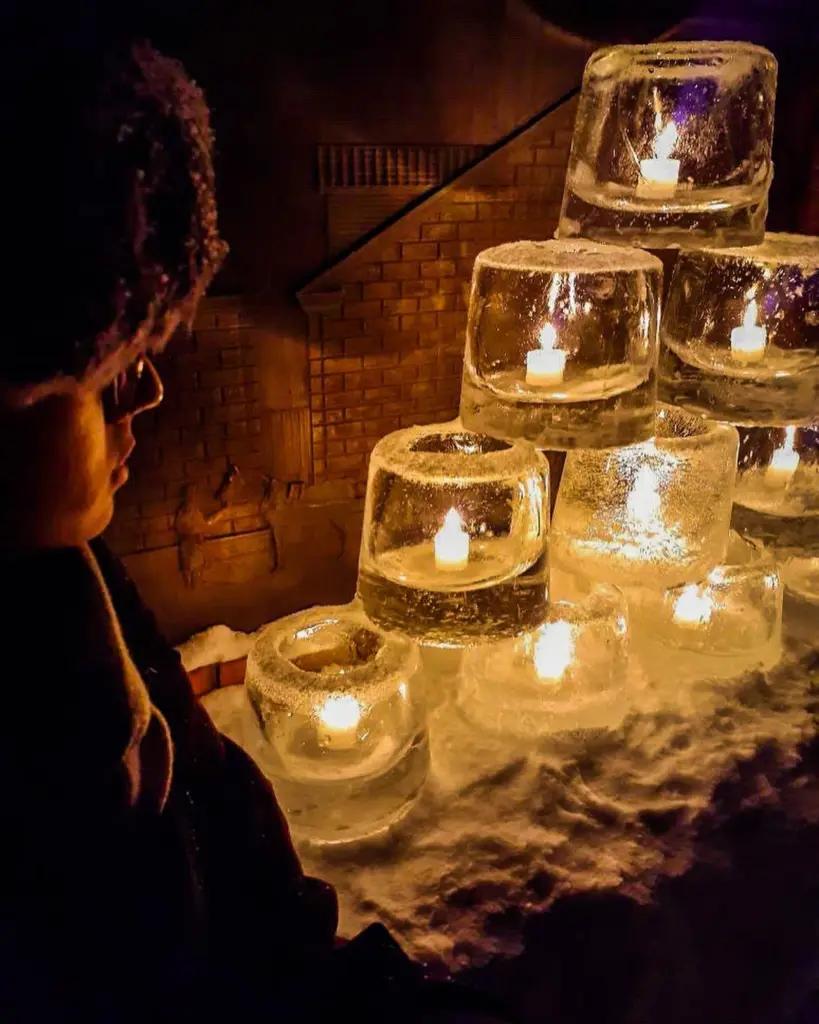
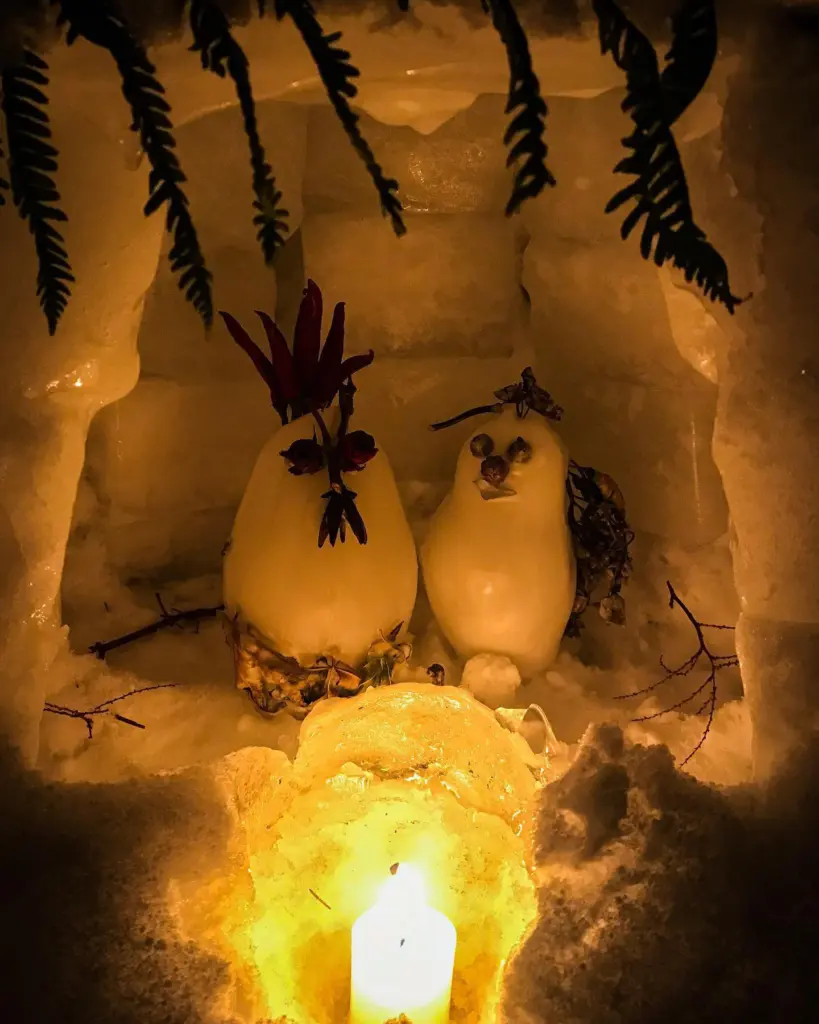
11. Otaru
If you have a couple of days to spare, a visit to some of the nearby areas around Sapporo is a great way to see more of what Hokkaido has to offer.
One such place is Otaru, a small harbor city located northwest of Sapporo. The train ride going to Otaru is one of the most scenic ones in the country, you’ll see the mountains on one side and the sea, the other. If you prefer a much more leisure ride, you can also opt for a private transfer from Sapporo.
The Otaru Canal, with its cobblestone paths and gas lamps, is one of the main draws of the city. Lined with old warehouses that now function as shops and cafes, it’s perfect for a leisurely stroll.
Otaru is also known for its glassware, and there are many shops where visitors can purchase handmade glass products or even try their hand at glassblowing. Music boxes are another popular souvenir from Otaru, and the Otaru Music Box Museum is a must-visit for anyone interested in these intricate devices.
If you’re visiting during winter, then definitely try to make it here as Otaru has it’s own winter festival called the Otaru Snow Light Path Festival which is one of the most charming and romantic snow festivals in Japan!

12. Asahikawa
Asahikawa is the second-largest city in Hokkaido, is surrounded by mountains, with the beautiful Daisetsuzan National Park nearby.
Along with Sapporo, Asahikawa is often used as a base for exploring the surroundings areas such as Mt. Asahidake, Biei and Furano, but the city itself has much to offer as well.
Asahikawa is most famous for Asahiyama Zoo, one of the most popular zoos in Japan. The zoo is renowned for its unique enclosures that allow you to observe the animals from various angles, including an underwater tunnel for viewing the penguins.
In winter, Asahikawa hosts the Asahikawa Winter Festival, which features humongous snow sculptures, even bigger than the ones over at Sapporo!
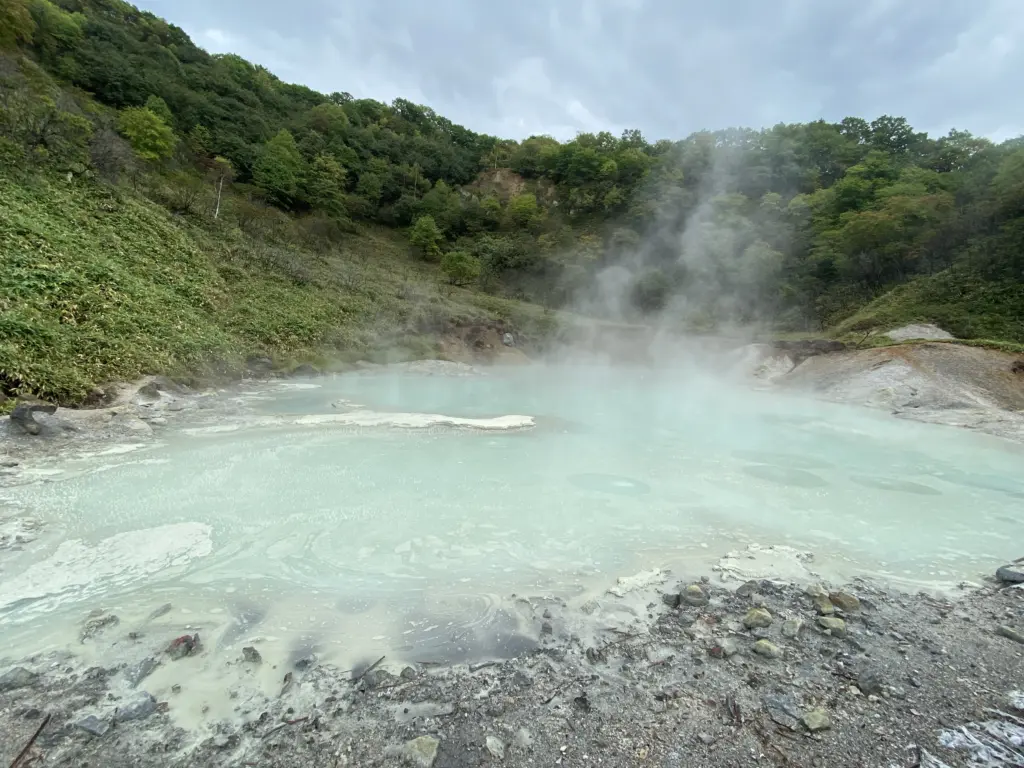
13. Noboribetsu
Another easy day trip from Sapporo, the main attraction of Noboribetsu is its hot springs, being one of Hokkaido’s best onsen resorts.
There are many ryokans and hotels in the area, each with its own onsen for you to relax in.
The most famous hot spring is Jigokudani, or “Hell Valley,” a volcanic crater created by the eruption of Mt. Kuttara. (Not to be confused with Hakone’s Owakudani which is sometimes also called Hell Valley.)
While you definitely can’t bathe in this one, admiring the amazing valley, filled with steaming hot springs, bubbling mud pots, and sulfurous streams makes for an amazing experience all the same!

14. Niseko
If you’re looking for powder in Hokkaido, look no further than Niseko!
Niseko is famous worldwide as one of the best skiing and snowboarding destinations in Japan. The powder snow in Niseko is absolutely legendary! It’s where I learned how to snowboard. And I can’t count how many times I’ve ridden the bus from Sapporo to head out to the slopes.
In the summer, the area transforms into a lush, green landscape, perfect for hiking, mountain biking, and golfing. Mt. Yotei, an active stratovolcano that is often compared to Mt. Fuji due to its symmetrical shape is Niseko’s guardian spirit, and easily hike-able during summer!
There’s also a private transfer from Sapporo to Niseko you can book for a seamless experience.
Top Things to Do in Sapporo
15. Relax at Jozankei Onsen
After a day of exploring Sapporo or hitting the slopes, there’s nothing better than soaking in a hot spring to relax and rejuvenate your body.
Jozankei Onsen is the perfect place for that.
About an hour’s drive from Sapporo, Jozankei is another hot spring resort town surrounded by beautiful natural scenery.
You can take a walk along the Jozan Gensen Park, a walking path with foot baths fed by natural hot spring water. There’s also the Jozankei Dam, which offers great views of the surrounding area, and the Jozankei Shrine, a beautiful Shinto shrine located in the forest.
The area is famous for its beautiful autumn colors, and there are several spots to enjoy the view, such as the Futami Suspension Bridge and the Hoheikyo Dam.
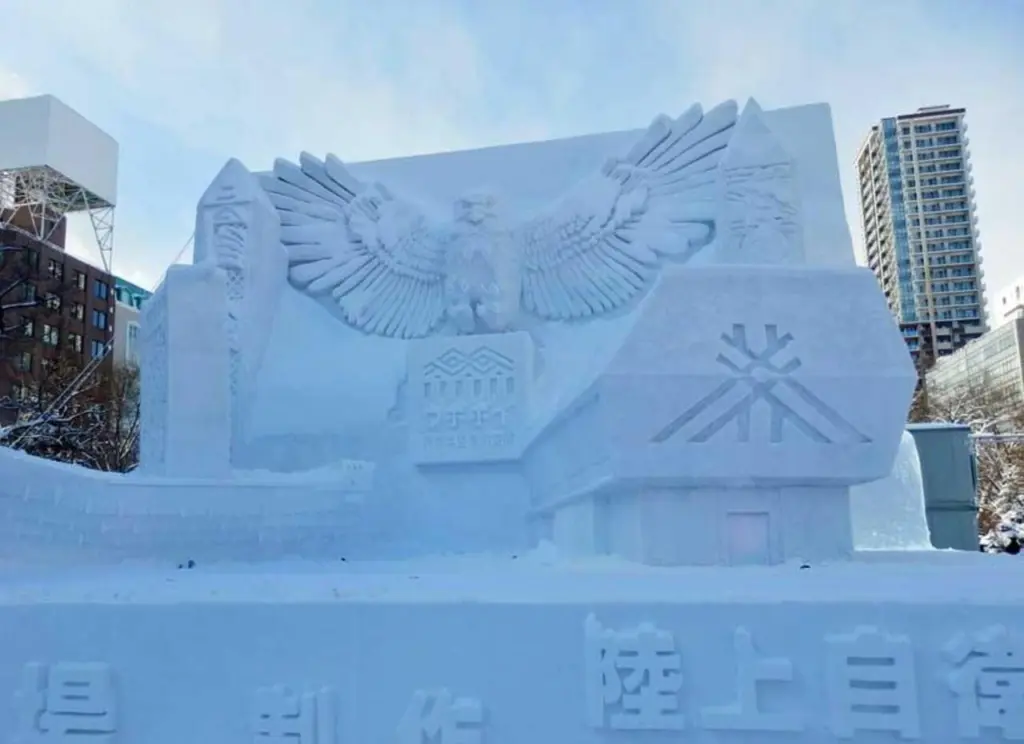
16. Witness the Sapporo Snow Festival
The Sapporo Snow Festival is a spectacle that you absolutely cannot miss if you’re in Sapporo.
It’s one of the most popular winter events in Japan, and for good reason!
The festival, locally known as Yuki Matsuri, is held over one week in early February, across three main sites in Sapporo.
The aforementioned Odori Park, the main venue showcases over 100 snow and ice sculptures that can reach up to 15 m (50 ft) tall. You’ll find yourself marveling at the craftsmanship and creativity that goes into each sculpture.
The second site is located in Susukino. Here you can find the Ice Sculpture Show, where smaller ice sculptures line the streets, beautifully illuminated at night. It’s a great place for an evening stroll as you can see the lights all around reflected and refracted through the ice.
The third site, Tsudome, is more family-oriented, with snow slides, snow rafting, and plenty of food stalls. It’s a great place to have some winter fun with the kids.
17. Enjoy Snowsports at Teine Ski Resort
If you’re a winter sports enthusiast or a first-timer looking to get your feet wet, you’ll definitely want to spend a day at Teine Ski Resort.
Located just a short drive from the center of Sapporo, Teine offers a variety of slopes for all skill levels, from gentle runs for beginners to challenging off-piste areas for experienced riders.
It’s one of the few ski resorts in Japan that you can reach by public transportation from a major city. You can take a train from Sapporo to Teine Station, and from there, it’s just a short bus ride to the ski resort.
You can find all the amenities you need for a day on the slopes, including rental equipment, ski schools, and restaurants. The resort is divided into two main areas: the Highland Zone and the Olympia Zone. The Highland Zone has more challenging runs and a terrain park, while the Olympia Zone is more suited to beginners.

18. Ride Up the mt. Moiwa Ropeway
Mt. Moiwa is one of the mountains surrounding Sapporo, and it offers one of the best views of the city.
To get to the top, you’ll first take the Moiwa Ropeway from the base of the mountain to the halfway point. From there, you’ll transfer to a mini cable car that will take you to the summit.
The ride itself is quite scenic, and you might find yourself snapping photos along the way.
Once you reach the summit, you’ll be treated to a breathtaking view of Sapporo and if you go up in the evening, you can see the city lights twinkling below!
Where to Stay in Sapporo
Sapporo is a good place to hole up in for a couple of days before making your way to other areas around Hokkaido. I found that the prices around the Susukino area can be a bit on the cheaper side though it’s also because there are a lot of clubs and the surrounding noise can be difficult to sleep.
If you’re going during winter, especially during the Snow Festival, then the rates sky-rocket so better book way early. Nevertheless, here are some of my recommendations on where to stay in Sapporo:
Best Hotels in Sapporo:
- The Base Sapporo Susukino – features rooms with city views, free WiFi, air conditioning, and various amenities including a desk, electric tea pot, fridge, microwave, safety deposit box, flat-screen TV, balcony, and a private bathroom with a bidet. Additionally, bed linen and towels are provided in each room.
- Hotel Classe Stay Sapporo – features a shared lounge, free WiFi, and luggage storage facilities. Each room at the hotel is equipped with a desk, flat-screen TV, private bathroom, bed linen, towels, and a fridge.
- Tmark City Hotel Sapporo Odori – offers air-conditioned rooms, each equipped with a flat-screen TV, a kettle, and a fridge. Additional amenities include a restaurant, 24-hour front desk, luggage storage, and complimentary WiFi.
Best Hostels in Sapporo:
- The Stay Sapporo – offering simply furnished dormitory and family-type rooms with free WiFi access throughout the property. The Stay Sapporo offers services such as free luggage storage and bicycle rental. You’re welcome to use the shared kitchen and lounge areas, and there is a vending machine on site. Rooms feature carpeted floors and city views, while bathroom facilities are shared.
- SappoLodge – prides itself as the most convenient and comfortable guest house in Sapporo. Designed with an urban lodge concept, it features a warm, wooden bar on the first floor, promoting communication between guests and locals. The knowledgeable staff, all residents of Sapporo, can recommend off-the-beaten-path spots not found in guidebooks, and the bar provides an opportunity to gather exciting information from locals. SappoLodge offers spacious bed spaces, larger than those in typical guesthouses.
- Waya Hostel Sapporo – a unique and homely place where the reception also functions as a bar. The hostel exudes a family-like atmosphere, which many compare to visiting a friend’s house rather than a hostel, thanks to the involvement of over 200 locals in its construction. The accommodation consists of cozy mixed dorms in a renovated apartment, with each having a private, curtain-enclosed space in the bunk beds, and access to clean, shared bathrooms, a living room with a heated floor table (Kotatsu), a well-stocked kitchen, and high-speed Wi-Fi.

How to Get Around Sapporo
Getting around Sapporo is relatively easy and convenient, thanks to its well-developed public transportation system. Here are some of the best ways to get around the city:
Subway: The Sapporo subway system is one of the easiest ways to get around the city. It has three lines: the Namboku Line (green), the Tozai Line (orange), and the Toho Line (blue). Most of the city’s main attractions are located near subway stations, so it’s a convenient option for sightseeing.
Japan Railways Train: The JR Hakodate Main Line runs through the city and connects to other major cities in Hokkaido, such as Hakodate and Otaru.
Tram: Sapporo has a single tram line that runs in a loop around the city center. It stops at several popular tourist spots, such as the Sapporo TV Tower and the Sapporo Beer Museum.
Bus: There are several bus lines that run throughout Sapporo and connect to the surrounding areas.
Taxi: Taxis are another convenient option for getting around Sapporo, especially if you’re traveling with a lot of luggage or you’re in a hurry, they can still be expensive but not as expensive as the ones at Tokyo.
Bicycle: Sapporo is a relatively bike-friendly city, with several bike lanes and bike rental shops.
Rental Car: If you’re planning on making side trips around and beyond Sapporo, then renting a car is simply the most cost-effective way to get around, along with the freedom and flexibility to see the landscapes at your own pace.
Sapporo uses the Kitaca and Sapica cards for transportation but your Pasmo or Suica can also be used.
Best Time to Visit Sapporo
Winter (December – February): Arguably the most popular time to visit Sapporo, with its winter sports and snow festivals. The temperatures during this time range from -7°C (19°F) to 0°C (32°F).
Spring (March – May): The temperatures start to rise in spring, ranging from 0°C (32°F) to 13°C (55°F). This is a great time to visit if you want to avoid the crowds and enjoy the cherry blossoms. Note that the cherry blossoms in Sapporo bloom later than in other parts of Japan, usually in late April to early May.
Summer (June – August): One of my favorite times to visit Hokkaido, summer is a pleasant time as the temperatures are mild compared to other parts of Japan. The temperatures range from 14°C (57°F) to 26°C (79°F). This is a great time to enjoy to go hiking, and cycling around Biei’s rolling flower fields is one of the best things to do during this time.
Autumn (September – November): Autumn is another beautiful time to visit Sapporo, as the leaves change color and the temperatures are comfortable. The temperatures range from 8°C (46°F) to 20°C (68°F). This is a great time to enjoy the autumn foliage and if you’re lucky you can see both snow and autumn foliage at the same time!

What to Pack For Sapporo
Clothing: Layering is key to staying comfortable in Sapporo’s variable climate. In the winter, pack warm, thermal layers, a heavy coat, gloves, a hat, and a scarf. In the summer, pack light, breathable layers, but also bring a sweater or light jacket for cooler evenings.
Footwear: In the winter, pack insulated, waterproof boots for the snow.
Travel Insurance: It’s always a good idea to have travel insurance for any trip, and SafetyWing offers comprehensive coverage at affordable prices.
Heat Packs: These are single-use packs that heat up when you shake them and can be really handy to keep in your pockets on particularly cold days.
Moisturizer and Lip Balm: The cold, dry air can be harsh on your skin and lips.
UV Protection: The snow reflects the sun, increasing UV exposure. Bring sunglasses with UV protection and a broad-spectrum sunscreen.
Reusable Shopping Bag: Many stores in Japan now charge for plastic bags.
Travel Plug Adapter: Japan uses Type A and B outlets, so if your devices use a different type of plug, you’ll need an adapter.
How to Get to Sapporo
By Air: The easiest and most common way to get to Sapporo is by air. Shin Chitose Airport is the nearest international airport to Sapporo, located about 50 km (31 mi) south of the city. From the airport, you can take a train, bus, or taxi to get to Sapporo city center. The train is usually the fastest and most convenient option, taking about 40 minutes to reach Sapporo Station.
By Train: If you are already in Japan, you can also reach Sapporo by train. The JR Hokkaido Shinkansen connects Tokyo with Shin-Hakodate-Hokuto, and from there, you can take a limited express train to Sapporo. The whole journey from Tokyo to Sapporo takes about 8 hours. If you have a JR Pass, this is a cost-effective way to travel.
By Car: If you prefer to drive, you can rent a car and drive to Sapporo. It’s going to be a long journey, but well-worth it if you have the time and stop by the various off-the-beaten path places along the way,
By Ferry: There are also ferries that connect Sapporo (via the port of Otaru) with other cities in Japan, such as Niigata and Tsuruga.
By Private Transfer: There are several private transfers you can book: from Shin Chitose Airport to Sapporo, and a shared transfer at a much cheaper rate.
Plan Your Trip to Sapporo | Best Travel Resources
Book Your Accommodations
- Booking.com – the world’s leading online booking platform for accomodations around the world, they have an extensive amount of available listings with zero booking fees and best price guarantees.
- Hostelworld – a backpacker’s best friend, Hostelworld has the largest collection of hostels and guesthouses for affordable prices.
Don’t Forget Insurance
- SafetyWing – from Nomad Insurance, an insurance by nomads for nomads. They understand our lifestyle well and have really comprehensive and flexible plans that cater to any traveler.
Find Cheap Flights
- Kiwi.com – my go-to for booking and finding the cheapest flights and it’s helped me save tons of money. They do virtual interlining which is connecting flights from airlines that do not codeshare, so you can find routes that you wouldn’t be able to find normally.
Join Tours & Activities
- GetYourGuide – is one of the best places to find unique tours and activities. I found that it’s an excellent way to meet fellow travelers and create fond memories. They are not only limited to tours as they also offer niche services such as skip-the-line tickets or private transfers.
Catch a Ride
- Rentalcars.com – nothing beats the freedom of the road, Rentalcars.com is the world’s largest online car rental service. They operate across 160 countries so they’re the perfect partner to work with if you find yourself wanting a ride.

